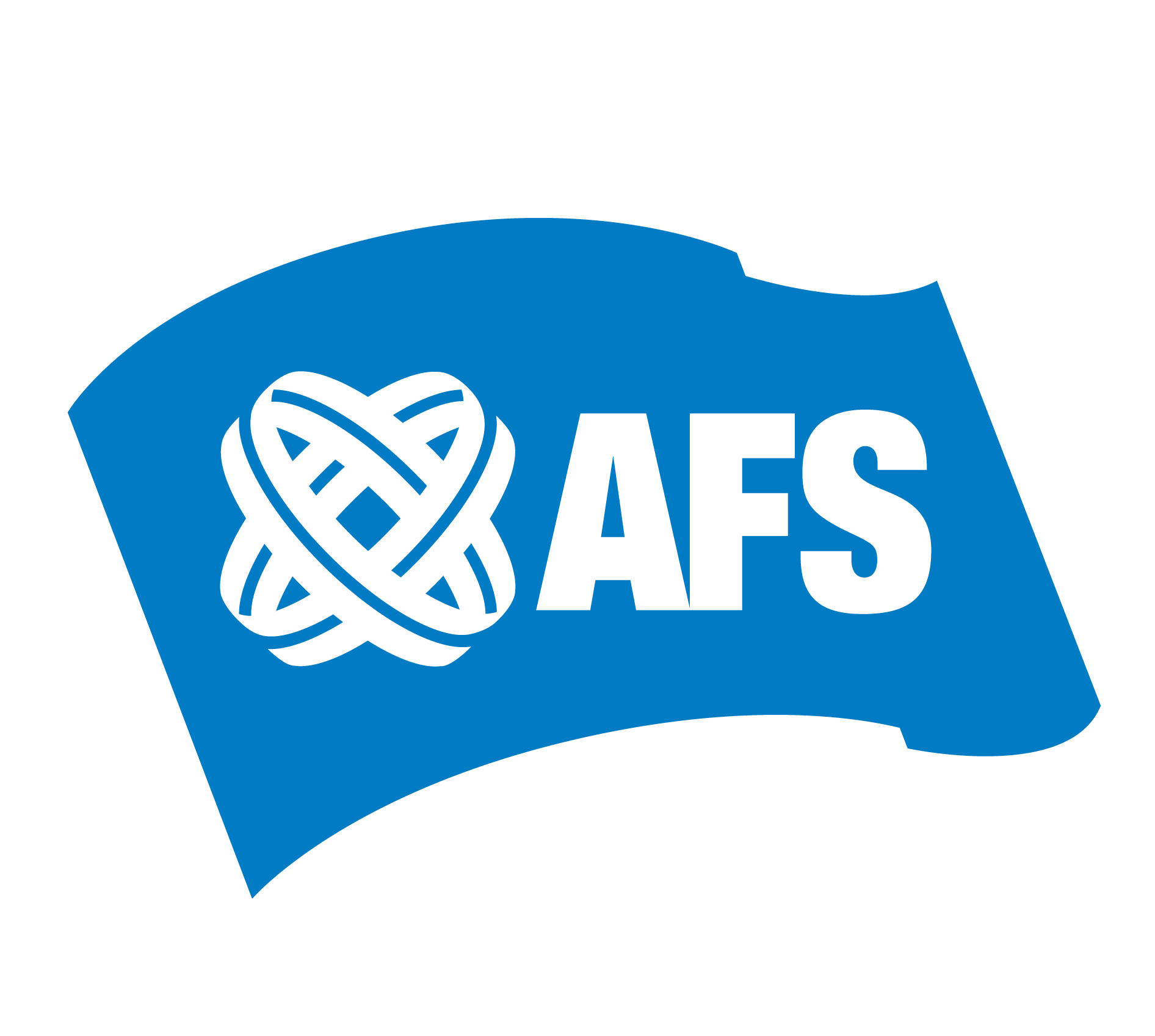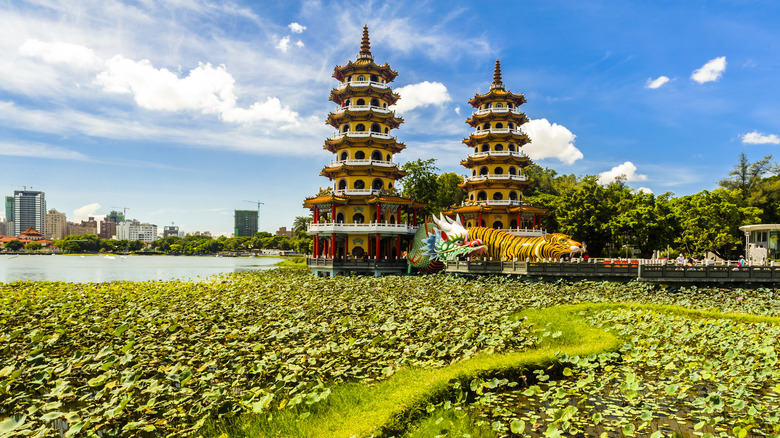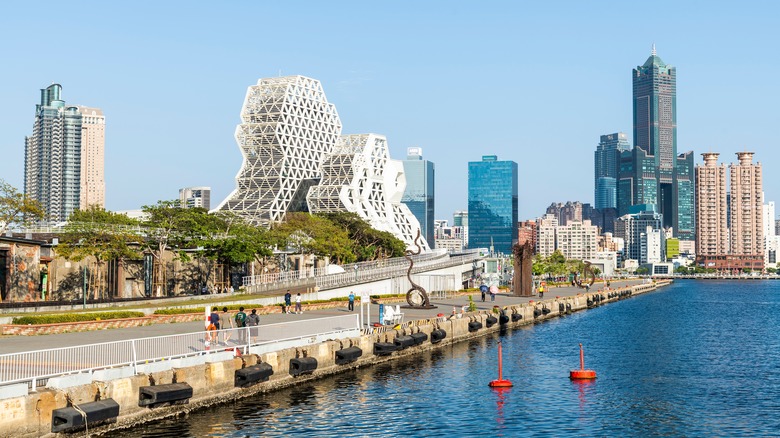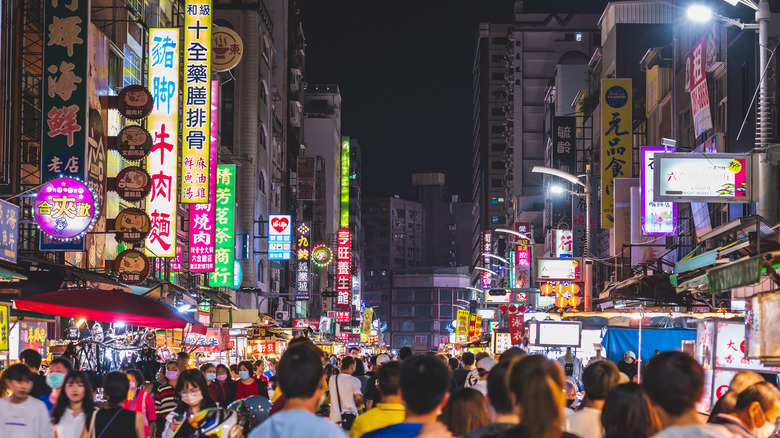When travelers think of Asia, they often choose Vietnam for its cuisine, China for the Great Wall and other landmarks, or the Philippines for its island life. But Taiwan? It somehow gets overlooked — even though it’s an island full of heritage, traditions, and must-see attractions. Take Taipei, for instance, one of the world’s safest cities for solo travelers, or Taichung, an awe-inspiring destination where history and culture meet the great outdoors. Now, there’s yet another city to add to your Taiwan itinerary: Kaohsiung. You’ve never seen a city this colorful, this urban, or this effortlessly cool, as it boasts stunning coastal views, rich landmarks, and a lively cityscape with the best panoramas.
Besides being an incredible travel destination and the country’s second-largest city, Kaohsiung is also easy on the wallet. With so many free attractions, budget-friendly hotels and hostels, and affordable public transport, you won’t have to spend a fortune to experience it all. Street food and local restaurants offer delicious meals at low prices, so you can eat well without overspending. According to Budget Your Trip, $123 per day for one person is enough to cover everything. And if you’re traveling with someone, sharing accommodation and other expenses makes it even cheaper.
You can fly directly to Kaohsiung International Airport for easy access to the city. But if you’re already in Taipei, you’re all the way up north, and driving to Kaohsiung can take up to 4 hours. A faster option is the high-speed train, which cuts the journey to about 3 hours with a quick transfer to a local train or bus.
Kaohsiung’s urban charm is unlike any other
Whether you’re wandering around ancient temples, admiring public art, or taking in the vistas of Kaohsiung, there’s something here for every traveler. One of the city’s most iconic places is the Lotus Pond. This tourist hotspot boasts fascinating temples and pagodas — the northern end is where you’ll find the grand Confucius Temple. Designed in the elegant Song Dynasty architectural style, it’s the largest of its kind in Taiwan. The southern edge is where striking dragon and tiger pagodas watch over the pond. Tradition says walking in through the dragon and out through the tiger brings good luck, so you have to give it a try. Don’t miss the Spring and Autumn Pavilions either — there’s a massive statue of Guanyin riding a dragon that is dying for photo ops.
Even Kaohsiung’s metro stations are worth a stop — literally. Formosa Boulevard Station is home to the breathtaking Dome of Light (above), made by artist Narcissus Quagliata. This masterpiece depicts the essence of human life through stained glass, with elemental themes — marvel at its beauty before hopping on your next train. History buffs should check out Fongyi Academy, one of the largest and best-preserved Confucian academies in the country. Built in 1814, this examination hall was once a center for aspiring scholars. You can still see its traditional altars, old-school desks, and lovely garden with quirky statues.
For spectacular sights of Kaohsiung, head to Martyrs’ Shrine — situated on the Shoushan mountainside — which was created during the Japanese era. This peaceful hilltop site is dotted with pine and cypress trees, an ideal escape from the city’s hustle. From here, you’ll get to see the sweeping horizon, which includes Gushan, Cijin, Kaohsiung Port, and the 85 Sky Tower.
Step up your cultural game, one exhibit at a time
Satisfy your midnight cravings at Kaohsiung’s markets
The evenings in Kaohsiung are just as vibrant as the days, with its night markets providing a feast for the senses. The city’s streets come alive with sizzling grills, bright neon signs, and the chatter of people bargaining — there’s no better way to experience Kaohsiung after dark. The Ruifeng Night Market is one of the most popular spots with over a thousand vendors selling everything from trendy clothes to fun games and, of course, mouthwatering snacks. You’ll find crispy fried squid, octopus balls, grilled meats, and Taiwan’s famous papaya milk. The market is a go-to hangout for locals and a great place to taste authentic flavors.
Another staple is Liuhe Night Market, a longstanding food and entertainment district dating back to the 1950s. By day, it’s a quiet street, but at night, it becomes a bustling market of seafood stalls, dessert vendors, and cold drink stands. Don’t leave without trying the steamed salty shrimp or a refreshing cup of papaya milk. If you love steak, you’ll find plenty of stalls offering juicy cuts at great prices. Whether you’re here to eat, shop, or just stroll, Kaohsiung’s night markets promise an unforgettable evening.
Taiwan has much more to discover beyond the typical sights. Make your way to Lambai Island for vibrant beaches and sea turtles. Better yet, seek out the country’s hidden hot springs, where you can unwind in natural warmth. Taiwan’s diversity allows you to enjoy its many facets, from scenic escapes to unexpected adventures.





